Equipment
Why AimPoint Will Save Your Putting: A Basic Introduction

Over the last 10 years, golf has changed dramatically and there is a constant push for technology. For years, club companies have made a push for more distance to create the “longest club ever.” What many golfers forget to realize is that about 30 percent of all strokes will occur on the putting green, so why isn’t there technology for sinking more putts? Well, there is and it’s changing the way players of all skill levels learn to read greens.
About six years ago, Mark Sweeney developed a system “which can accurately predict optimum putting parameters and putt trajectories from any point on a green to any other point.” In layman’s terms: He developed a way to give you the correct read of any putt from anywhere on a putting green. I was skeptical at first but having a background as a civil engineer piqued my interest.
AimPoint is similar to a science experiment. The more variables you have in an experiment, the more your results tend to vary; the fewer the variables, the more precise the results. AimPoint strives to isolate each variable that occurs on a putting green and the golfer basically plugs them into an AimPoint chart.
Let me elaborate, for this example a golfer hits an approach shot to 15 feet and is getting ready to read the break of his simple one plane putt. Most of the time, golfers are playing a guessing game based off of past experiences and there is no methodology to how much the putt will break. With AimPoint, the same golfer will now answer a few quick questions to systematically determine the break of the putt and it’s surprisingly easy.
1.) What is the length of the putt?
- This is generally simple and can be your best estimation of how long your putt is.
2.) What is the slope of the putt?
- This one is a bit tricky and will take a little practice. The severity of slope on any putt is generally between 1 and 4 percent. In my time using AimPoint, I’ve observed most of my putts are about 2 percent and rarely get to 4 percent. Getting yourself a digital level can help you hone this skill further.
3.) What angle is the putt to the slope?
- You don’t need to be an engineer to solve this equation but this does take a bit of practice. Essentially if you were to draw a line from your ball to the hole, and then lay your club down in the same direction of the break, the two lines intersect. What is the angle between the two.
4.) What is the stimp (speed) of the green?
- Some courses post their current green speed for the day but it’s always best to estimate your own stimp.
That’s it. Once you have all the information the only variable left is referred to as capture speed. All AimPoint calculations assume your putt will lay to rest about six to nine inches past the hole on every putt. You take this information, plug it into your “AimChart” and you have your read.
At first it might seem daunting to roll through all these variables but with practice you or your regular caddie will become very proficient in gathering all the information in less than 30 seconds.
So why waste another $400 on a driver that is the “longest ever” and spend a few dollars on learning a new skill that will revolutionize the way you read the putting green. If you don’t believe me, feel free to ask PGA Tour Pro Justin Rose (whose putting performance at the Ryder Cup sparked a historic comeback) or LPGA Tour Pro Stacey Lewis (who has won four tournaments in 2012 and LPGA Player of the Year), or any of the over 60 Tour pros who are currently “Aimpoint-ing.”
- LIKE115
- LEGIT18
- WOW23
- LOL9
- IDHT6
- FLOP10
- OB10
- SHANK28
Equipment
Webb Simpson equipment Q&A: Titleist’s new 2-wood, 680 blade irons, and switching to a broomstick Jailbird

With seven career wins on the PGA Tour, including a U.S. Open victory, Webb Simpson is a certified veteran on the course. But he’s also a certified veteran in the equipment world, too. He’s a gearhead who truly knows his stuff, and he’s even worked closely with Titleist on making his own custom 682.WS irons.
On Wednesday at the 2024 Wells Fargo Championship, I caught up with Simpson to hear about his experience with Titleist’s new prototype 2-wood, how Titleist’s 680 Forged irons from 2003 ended up back in his bag, and why he’s switching into an Odyssey Ai-One Jailbird Cruiser broomstick putter this week for the first time.
Click here to read our full story about Simpson’s putter switch on PGATOUR.com’s Equipment Report, or continue reading below for my full Q&A with Simpson at Quail Hollow Club on Wednesday.
See Webb Simpson’s full WITB from the 2024 Wells Fargo Championship here
GolfWRX: It seems like you’ve been a little all over the place with your irons in the past six months or so, and now going back to the 680’s. Is that just a comfort thing? What’s been going on with the irons?
Webb Simpson: Titleist has been so great at working with me, and R&D, on trying to get an iron that kind of modernizes the 680. And so the 682.WS took the T100 grooves, but kinda took the look and the bulk and the build of the 680’s into one club. They’re beautiful, and awesome looking. I just never hit them that well for a consistent period of time. It was probably me, but then I went to T100’s and loved them. I loved the spin, the trajectory, the yardage, but again, I never went on good runs. Going through the ground, I couldn’t feel the club as well as with the blade. So last week, I’m like, ‘Alright. I’m gonna go back more for…comfort, and see if I can get on a nice little run of ball striking.’
So that’s why I went back.
View this post on Instagram
OK, that makes sense. I know you had done some 2-wood testing recently. Is that in the bag right now?
It’s like day-by-day. I used it at Hilton Head every day. Valero, I used it one round. And this week, me and my caddie will do the book every morning, and if it’s a day where we think we need it, we’ll just put it in and take the 3-wood out. I love it because it’s a super simple swap. Like, it doesn’t really change much.
Yeah, can you tell me about that club? I mean, we don’t really know anything about it yet. You know? I haven’t hit it or anything, obviously.
It has grooves like a 3-wood. Spin is perfect. And it’s honestly, like, everything is in the middle of a 3-wood and driver number. Trajectory, spin, carry, all of it. So, a Hilton Head golf course is almost too easy to talk about because, you know, there, so many holes are driver 3-wood.
Valero, our thinking was we had two par-5’s into the wind, and we knew that it would take two great shots to get there in two. So instead of hitting driver-driver, we just put it in. And I used it on those holes.
Hilton was a little easier because it was off-the-tee kind of questions. But Colonial will be a golf course where, you know, there’s a lot of driver or 3-woods. It’s kind of like a backup putter or driver for me now. I’ll bring it to every tournament.
So it’s, like, in your locker right now, probably?
Well, it would be. It’s in my house [because Webb lives near by Quail Hollow Club, and is a member at the course.] It’s in the garage.
Oh, yeah, that’s right. Do you know what holes you might use it out here if it goes in play?
Potentially 15, depending on the wind. Second shot on 10. Could be 14 off the tee. The chances here are pretty low (that he’ll use the 2-wood). But, like, Greensboro would be an awesome club all day. I’m trying to think of any other golf courses.
There’s plenty that it’ll be a nice weapon to have.
It’s interesting, the wave of 2-woods and mini drivers. Like, it’s just really taken off on Tour, and all the companies have seemed to embrace it.
Yeah. The thing I had to learn, it took me, like, at least a week to learn about it is you gotta tee it up lower than you think. I kept teeing it up too high. You need it low, like barely higher than a 3-wood. And that was where I got optimal spin and carry. If you tee it up too high, you just don’t get as much spin and lose distance, I don’t know if that’s just a mini driver thing.
And you obviously have a Jailbird putter this week. What spurred that on?
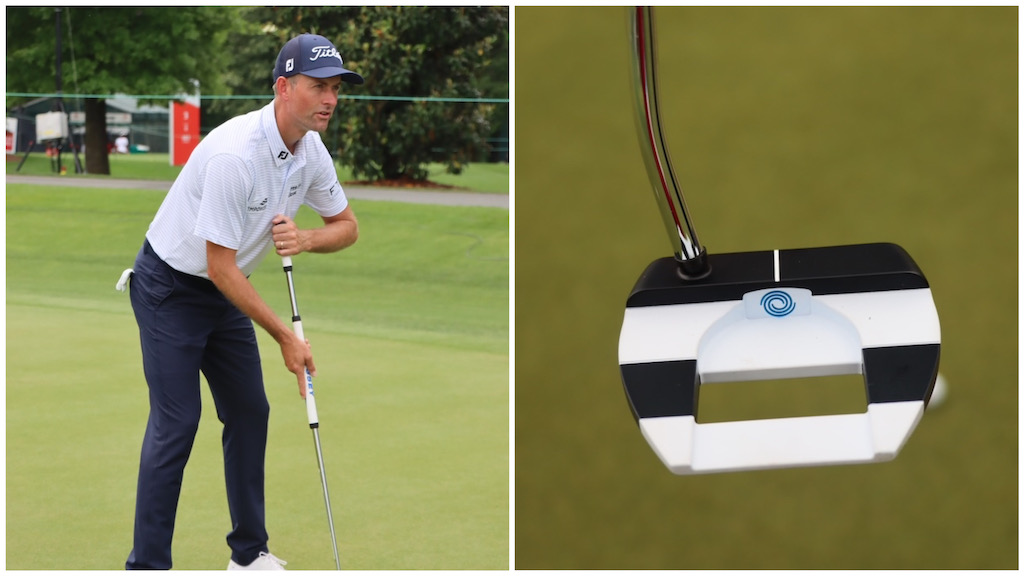
Inconsistent putting. I’m stubborn in a lot of ways when it comes to my equipment, but I have to be open minded – I just hadn’t putted consistently well in a while. And I’m like, ‘Man, I feel my ball-striking coming along. Like I feel better; for real, better.’
If I can just get something in my hands that I’m consistent with. Being on Tour, you see it every year, guys get on little runs. I can put together four to five tournaments where I’m all the sudden back in the majors, or in the FedExCup Playoffs. You can turn things around quick out here. I’m like, ‘Man, whatever’s going to get me there, great.’

My caddie, David Cook, caddied for Akshay at the Houston Open and he putted beautifully. Then, I watched Akshay on TV at Valero, and he putted beautifully. And, I’m like, ‘I’m just going to try it.’
I’ve never tried it for more than a putt or two, and I just ordered what Akshay uses. It was pretty awkward at first, but the more I used it, the more I’m like, ‘Man, it’s pretty easy.’ And a buddy of mine who’s a rep out here, John Tyler Griffin, he helped me with some setup stuff. And he said at Hilton Head, he wasn’t putting well, then tried it, and now he makes everything. He was very confident. So I’m like, ‘Alright, I’ll try it.’”
And you’re going with it this week?
Hundred percent.
Alright, I love it. Thank you, I always love talking gear with you. Play well this week.
Thanks, man.
See Webb Simpson’s full WITB from the 2024 Wells Fargo Championship here
- LIKE16
- LEGIT1
- WOW1
- LOL1
- IDHT0
- FLOP0
- OB0
- SHANK1
Product Reviews
GolfWRX member testing: L.A.B. Golf DF3 putters
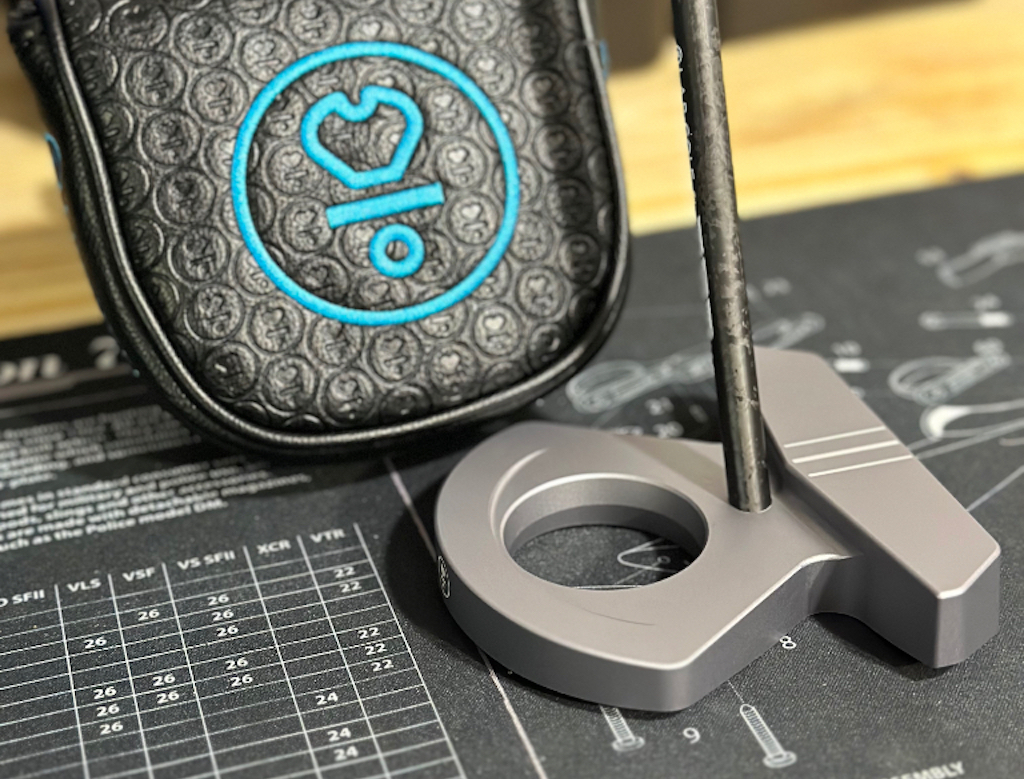
Like L.A.B. Golf’s larger DF 2.1 putter, the new DF3 is “fully automatic.” That means golfers will get the full experience of DF3 wanting to guide itself on the correct path on the way back and through. This is possible thanks to L.A.B. Golf’s patented Lie Angle Balance technology. The technology creates true zero-torque putters that stay square by themselves. Golfers can trust that L.A.B. Golf putters will return to square without any need for manipulation.
How we choose our testers
GolfWRX staff evaluates each entry against the criteria laid out in the testing thread to determine the best fit for each specific product — For example, if a game-improvement iron is being tested, game-improvement iron-playing golfers will be considered.

Overall tester feedback
Overall, our testers were impressed with the ease and precision of the remote-fitting process with its custom options. On the whole, even those skeptical about the DF3’s shape enjoyed the ease of alignment and consistent delivery of putter to ball, with some testers pointing to an initial “adjustment period.” Those who had played previous L.A.B. creations universally praised the improved feel of the DF3.
What our members said
“I try to take a lighter grip typically when I putt or at least when I am putting my best. I can do that for the most part BUT it is on the shorter putts lately where the grip gets a little tighter at times. The one thing I tried to focus on, after watching some videos Sam has putt online about how to putt with his putters, was to not feel pressure in my thumbs during the stroke and let the putter swing more freely. When you do this, this putter just wants to rock back and forth. Let the putter/tech do the work for you without your brain trying to telling to manipulate the face in any way. It was a different feeling not having that “torque” working against your hands in the feel of the stroke.”
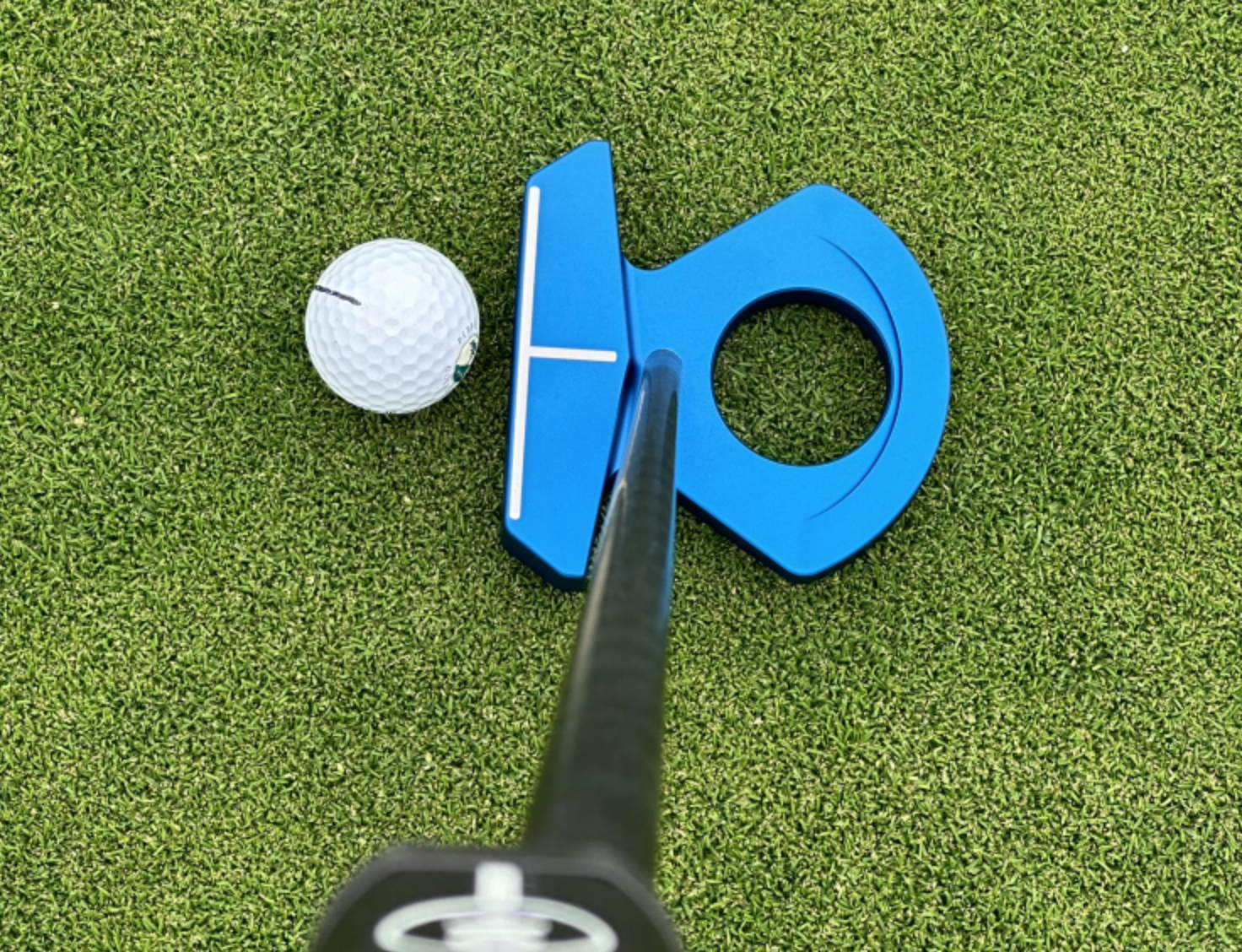
“At this point, I feel completely confident with this putter. I have never seen the ball roll this consistently end over end on my start line. It has made me realize that I definitely have a bit of work to do in the green reading department, but what’s really nice is that it never leaves me guessing. When I watch the ball start on my line and roll perfectly end over end, it is at least nice to be able to definitively say “oh I just misread that” while taking out almost every other variable.”
“Also for whatever reason people find the gimme getter so hilarious. It’s always just “oh cool that picks up balls?!”…Unless something wild happens this putter will be staying in the bag for the foreseeable future including the tournament schedule over the season, I’ve got almost nothing bad to say about it.”
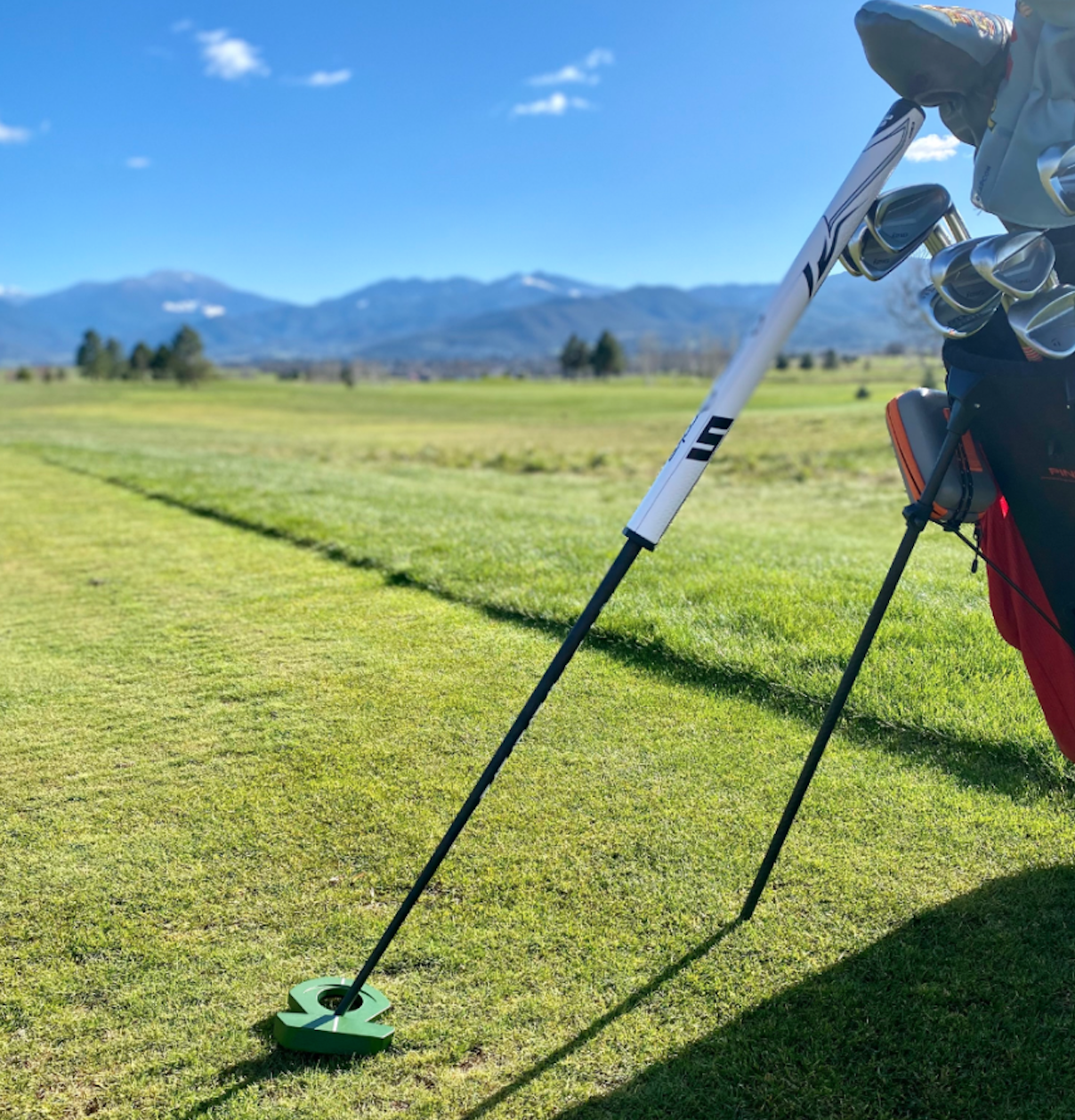
“It’s everything I hoped it would be. I’m very happy I went with the heavier head option, I fear the standard weight would have felt a touch too light for my taste. So shout out to Calvin for being spot on there. At the current weight, I can have a light grip pressure and let gravity do the work. The head just feels incredibly stable and amazingly solid. Speaking of grip, I really debated what grip to go with and the Press Pistol seems like a great choice. The grip feels very versatile for different putting styles, maybe a bit less so for left hand low (imo). I’m mostly a “2 thumbs” guy but have gone back and forth with left hand low as well as claw. The grip tapers down to a smaller flat oval at the bottom. I didn’t love it for left hand low, but for a claw style grip it is really really good.”
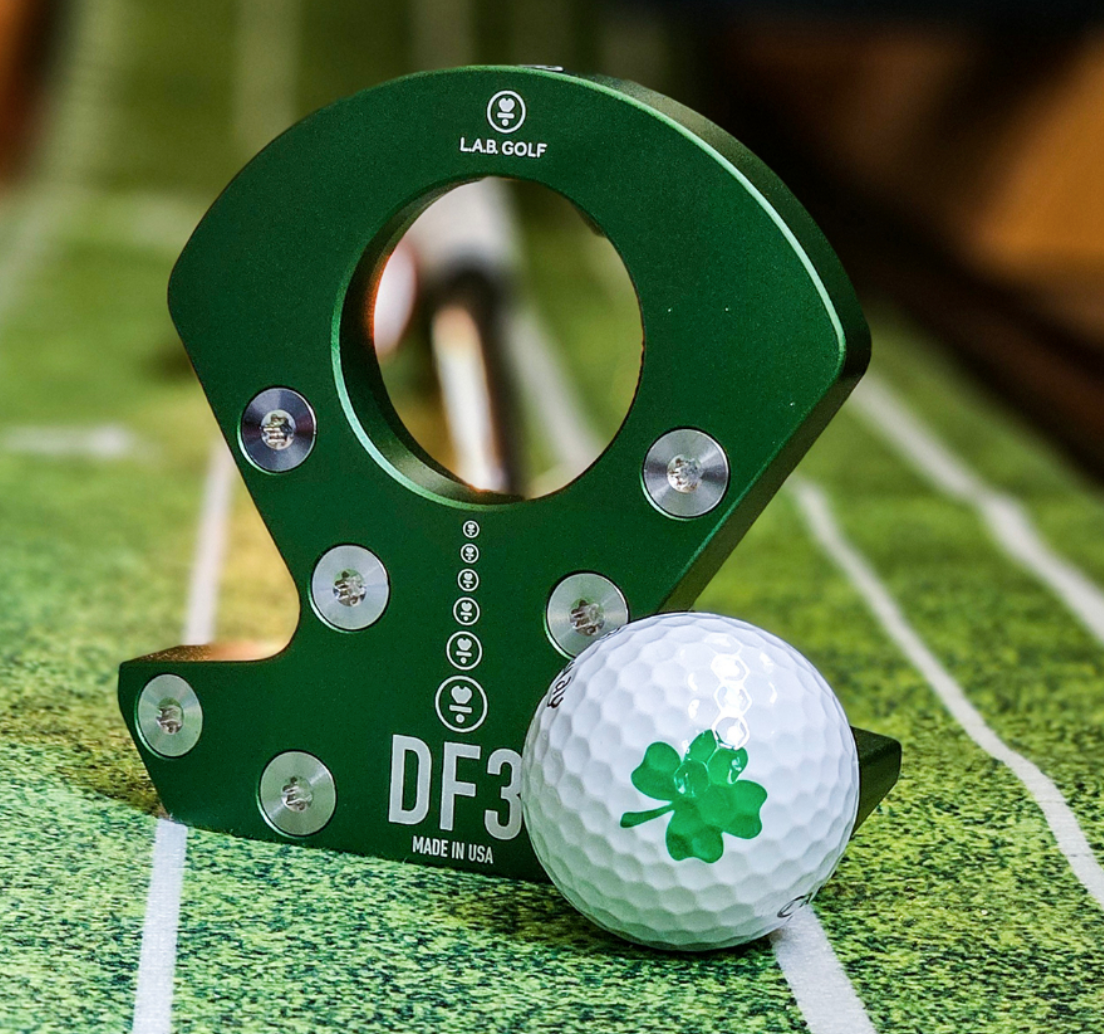
“This putter isn’t going to magically turn a poor putter in to Brad Faxon on the greens. But what I can say with confidence is that removing the excessive face rotation from the putter makes creating a repeatable, consistent stroke infinitely easier to obtain. If you’ve been wanting to try a LAB putter, this is the one truly worth taking the dive on in my opinion. Having never been completely blown away with the Mezz or DF 2.1, this putter has really changed my opinion. I’ve always been really intrigued by the technology, and completely buy in to the concept, but I’ve never been able to get past what I perceived to be less than stellar looks, sound and feel. LAB, in my opinion, has address and improved on all of those things. While this putter still looks far from conventional, it did not take long to get comfortable with the look or footprint. It’s not overly obnoxious in size and sets up so well behind the ball.”
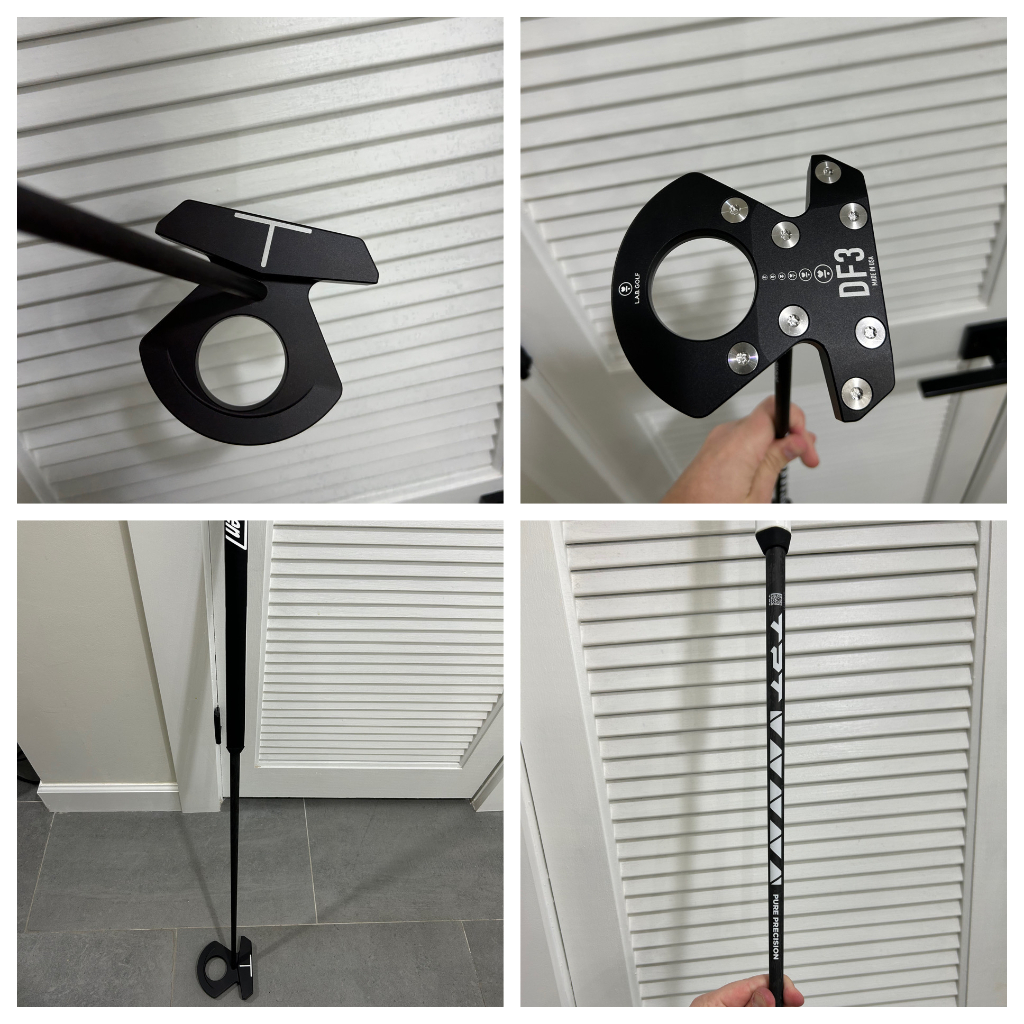
“As far as consistency, it’s ridiculous. You can hit these putters ANYWHERE on the face and the ball rolls end over end. And whether you hit it in the middle, on the toe, or on the heel. The balls roll pretty much the same distance, easily within 6″ of each other.”
“LAB really did a great job with the new smaller size as well. The DF 2 always felt like I was putting with a branding iron. The DF 3 is a perfect compact size and very easy to look down at.”
“The DF 2 I had was an armlock putter. So my only concern with the DF 3 was the grip. I have never been a hands pressed forward putter. It was recommended to me to go with the Press II 1.5* grip so I did. Went with the textured grip and it is perfect. I putt with the pencil grip and my hands are very comfortable.”
“As much as I love the roll that the PXG milled face putters (which I’ve been using for years) put on the ball the DF 3 is even better. Can’t believe I’m saying this but you will soon see my PXG putter on the BST.”
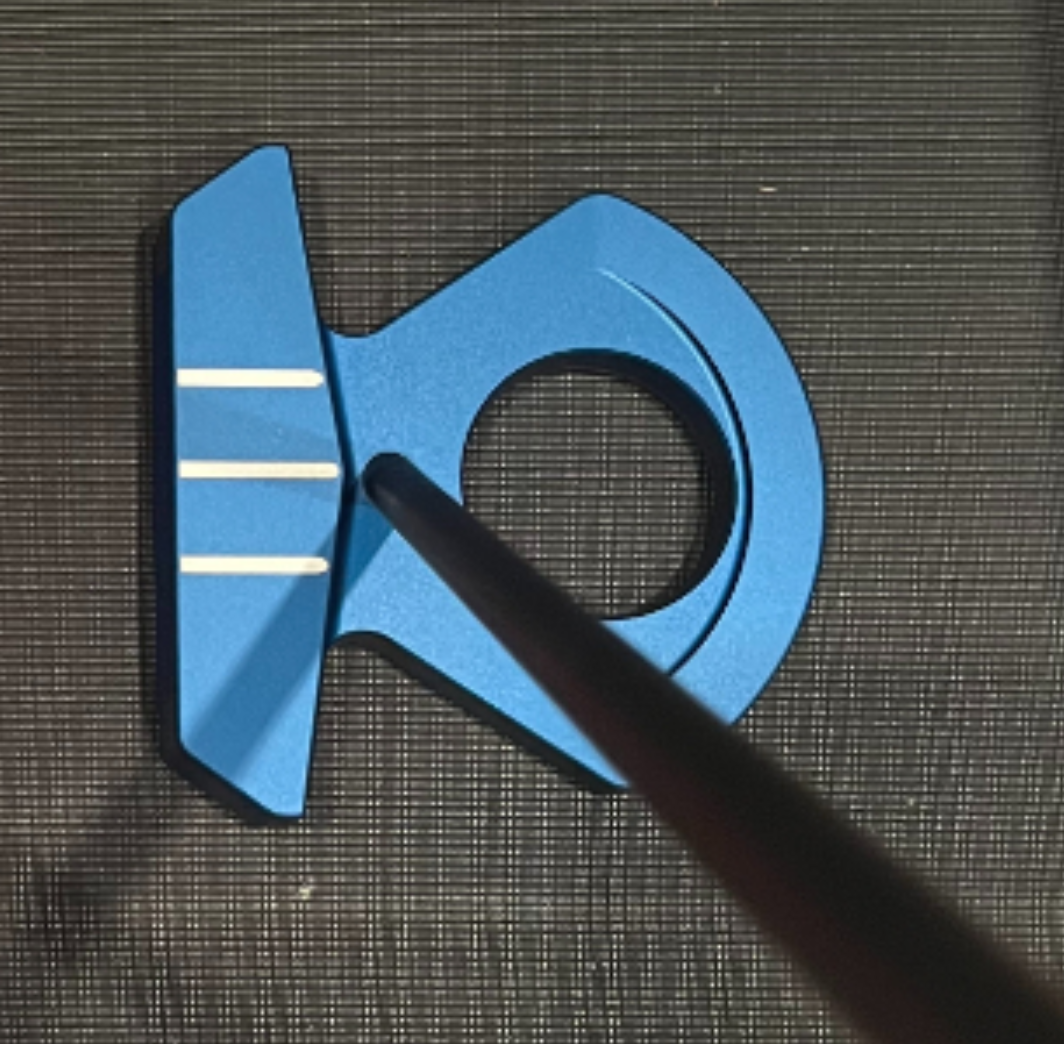
Member review themes
- Ease of remote fitting process
- Putter stability
- Surprisingly good sound and feel
- Ease of getting a putt on line
- Ease of alignment
Check out the full review thread here.
More about GolfWRX member testing
Member testing gives our forum members the opportunity to put the latest golf equipment through the paces. In exchange for getting a product to test (and keep), forum members are expected to provide in-depth product feedback in the forums, along with photos, and engage with the questions of other forum members.
For brands, the GolfWRX member feedback and direct engagement is a vital window into the perceptions of avid golfers.
You can find additional testing opportunities in the GolfWRX forums.
- LIKE0
- LEGIT0
- WOW0
- LOL0
- IDHT0
- FLOP0
- OB0
- SHANK0
Whats in the Bag
Matthieu Pavon WITB 2024 (May)
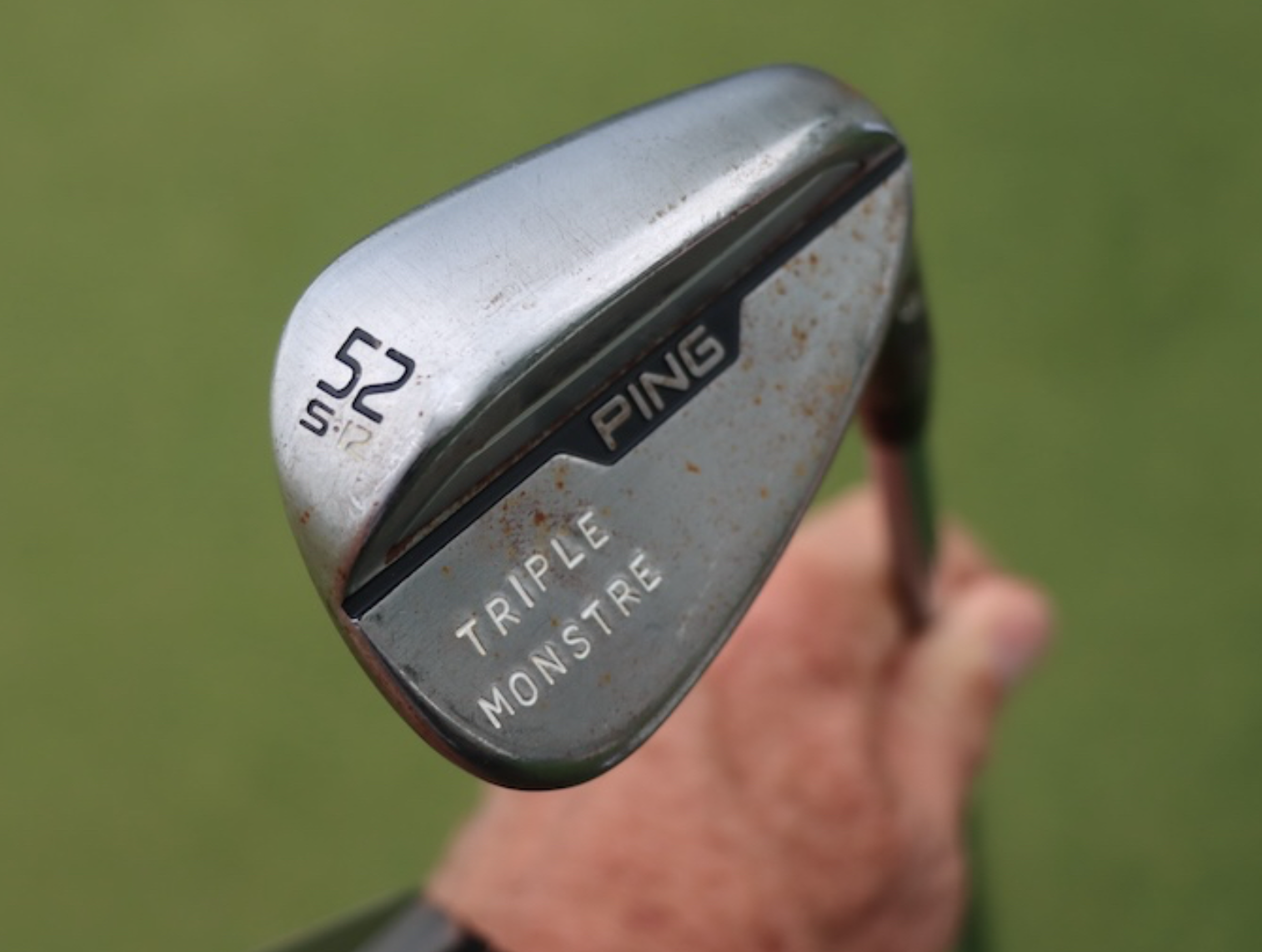
- Pavon’s WITB accurate as of the Wells Fargo Championship. More photos from the event here.
Driver: Ping G430 Max (9 degrees)
Shaft: Fujikura Ventus TR Black 6 X

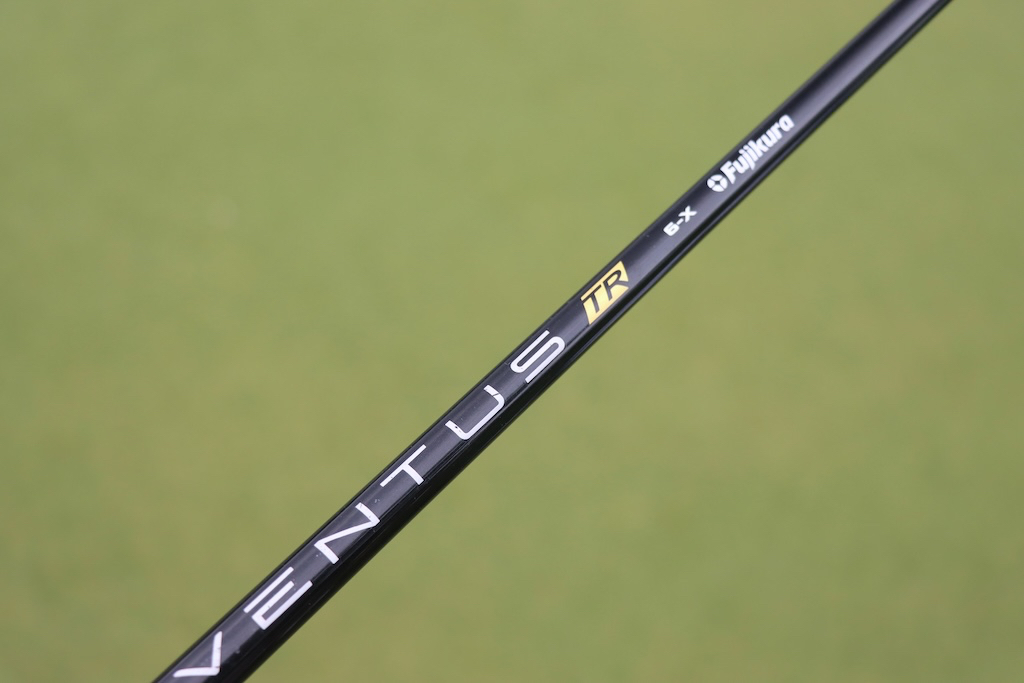
3-wood: Ping G430 LST (15 degrees)
Shaft: Fujikura Ventus TR Black 7 X

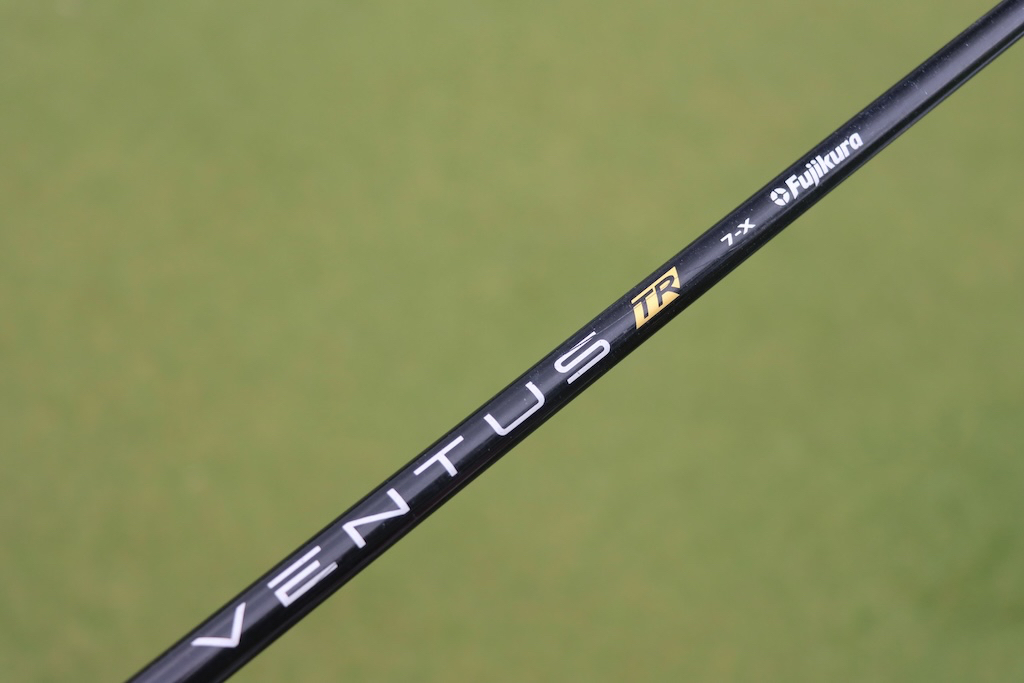
Hybrid: Ping G430 (19 degrees)
Shaft: Fujikura Ventus Black 10 X
Irons: Ping i230 (3-PW)
Shafts: Nippon Modus3 Tour 120 X
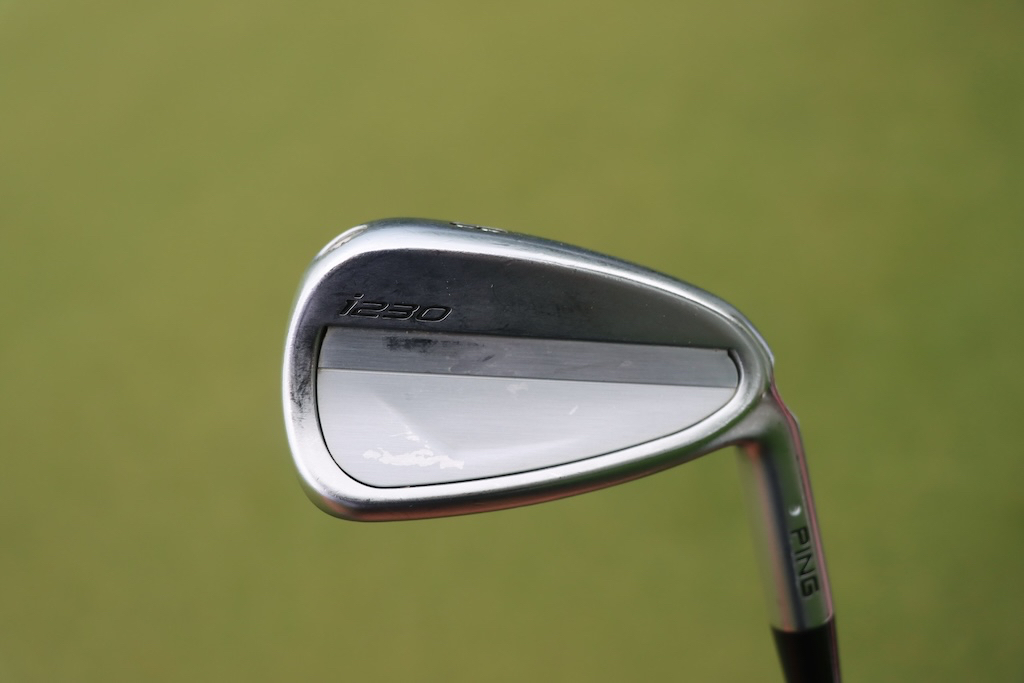
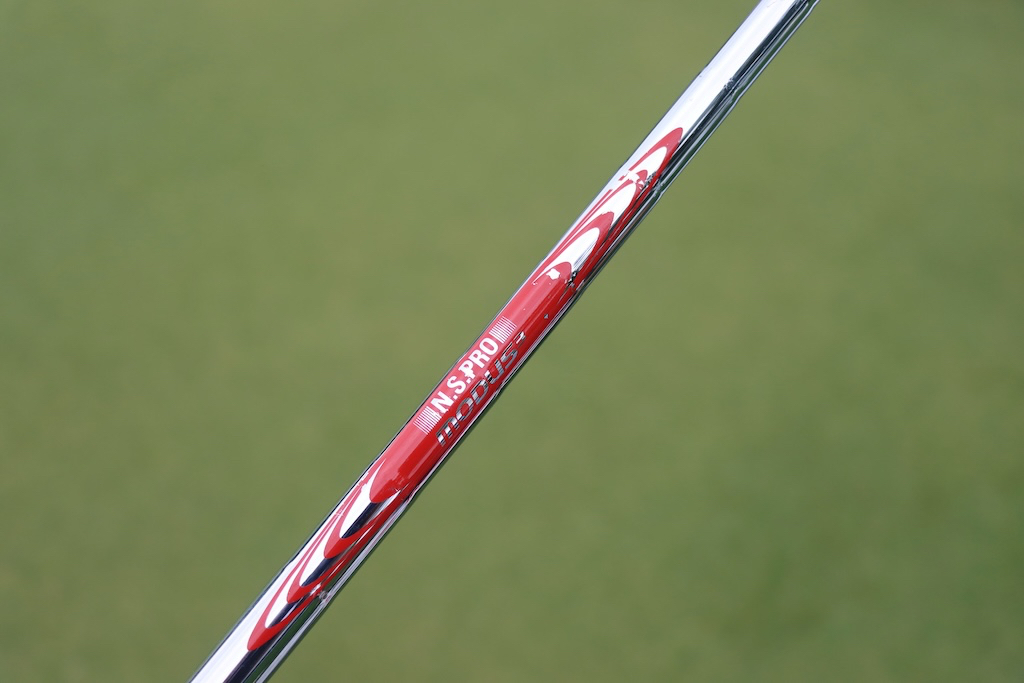
Wedges: Ping Si59 (52-12S, 58-8B)
Shafts: Nippon Modus3 Tour 120 X

Putter: Ping Cadence TR Tomcat C
Grip: SuperStroke Claw 1.0P
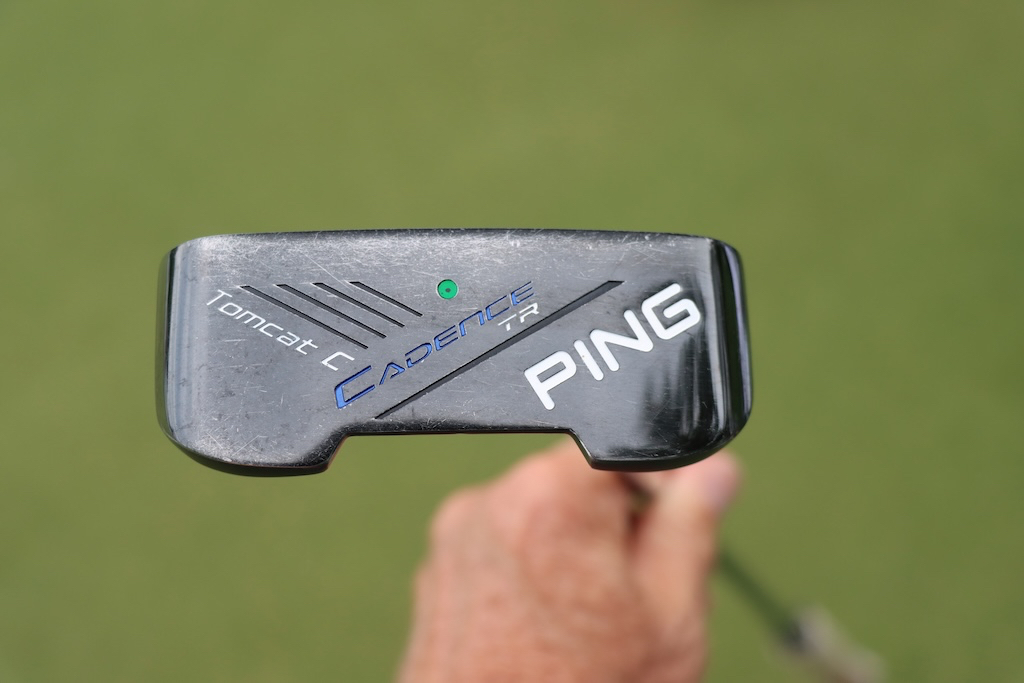
Grips: Golf Pride MCC Align
Ball: Titleist Pro V1
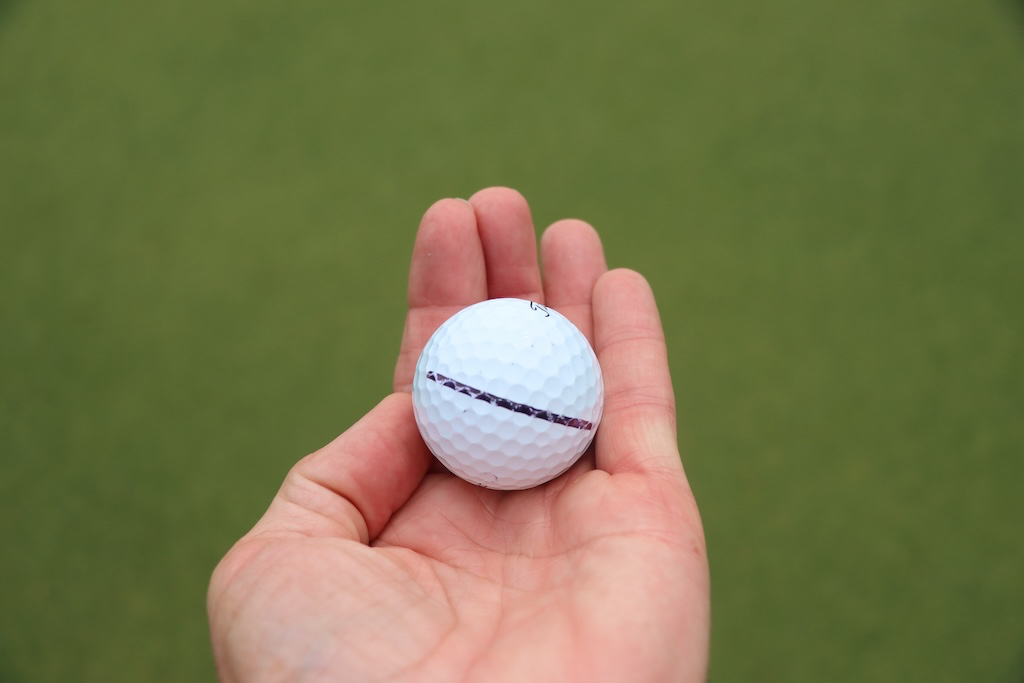
Check out more in-hand photos of Pavon’s gear here.
- LIKE3
- LEGIT1
- WOW0
- LOL0
- IDHT0
- FLOP0
- OB0
- SHANK0
-

 19th Hole3 weeks ago
19th Hole3 weeks agoJustin Thomas on the equipment choice of Scottie Scheffler that he thinks is ‘weird’
-

 19th Hole3 weeks ago
19th Hole3 weeks ago‘Absolutely crazy’ – Major champ lays into Patrick Cantlay over his decision on final hole of RBC Heritage
-

 19th Hole2 weeks ago
19th Hole2 weeks agoLET pro gives detailed financial breakdown of first week on tour…and the net result may shock you
-

 19th Hole3 days ago
19th Hole3 days agoReport: LIV star turns down PGA Championship invite due to ‘personal commitments’
-

 19th Hole1 week ago
19th Hole1 week agoGary Player claims this is what ‘completely ruined’ Tiger Woods’ career
-

 Whats in the Bag2 weeks ago
Whats in the Bag2 weeks agoTeam McIlowry (Rory McIlroy, Shane Lowry) winning WITBs: 2024 Zurich Classic
-

 Equipment1 week ago
Equipment1 week agoGolf fans left surprised by LIV’s choice of course for its 2024 individual championship event
-

 19th Hole1 week ago
19th Hole1 week agoLIV star splits with swing coach after working together for 14 years

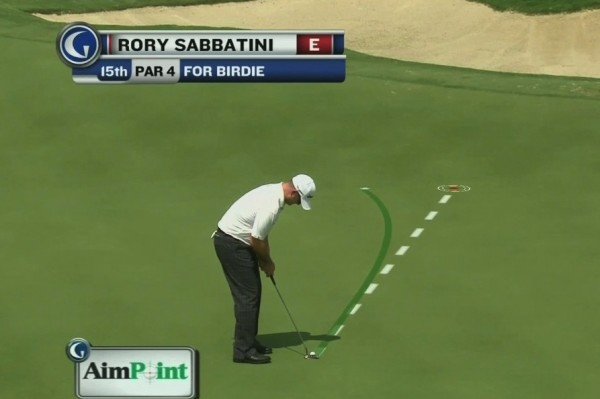


























???????????
Jun 16, 2014 at 12:38 am
I concur with the many suggestions you might have travelling to this post. They may be incredibly persuading and might absolutely perform. Even so, a threads are certainly brief for starters. May perhaps you desire increase these people somewhat coming from next time? Thanks for the actual article.
Tom Gillis
Jun 10, 2014 at 7:54 pm
It works.. Gillisgolf.com
dave b.
Apr 17, 2014 at 1:26 pm
There might be one or two other items in the running, but the basic AimPoint class I took last year is solidly top-3 in the best-money-I-ever-spent-on-golf-instruction category.
After a 3-year layoff from golf (newborn) my putting skill and touch was gone. I got a long-overdue putter fitting (which helped some) then I took the AimPoint single-break class and it changed my putting nearly overnight. Skills I have now that I didn’t before: I *always* know which way it will break — don’t laugh, I used to just read the break wrong (visually) A LOT!. I also know the distance of my putts down to the foot, know whether the putt is breaking a little vs. a lot, and a good idea of the stimps without a stimp meter or anything weird, just using the chart. I now make everything up to 5-feet pretty easily and if I leave 20-30 footers they are tap-ins.
One fo the more intangible things is that by following the charts, and seeing putts drop, it helped me get back a bit more of that intrinsic “feel” for the right capture speed. It’s hard to describe the feeling but I’m not trying to “die” the ball into the cup anymore, and I don’t often run it 6-feet (or more!) past the hole.
Don’t get me wrong, I still miss putts and make bad reads, but at least I’m in the ballpark much more with my misses than I used to. I make a high percentage of 10-15 footers now, where in the past those were almost automatic misses.
About the speed of play stuff: It has been a full season since I started with AimPoint and I often forget to even get out the chart book especially if I’m playing my home course — I would be even more accurate if I did use it, probably. When I do use the chart I glance at it once or twice per round (usually for putts in 15-20 foot territory). I would definitely bring the charts along on a new course where the stimp is way different from my home course. My playing partners have no idea what I’m doing — I stroll around on the green and look at lines, I plumb-bob a little, then drain it (usually). The other guys take longer than me, and then they usually miss.
I didn’t intend to write a book here, but I wanted to give real-world feedback. I am super happy with the results. It was a bit to choke down the price of the class, but honestly I have to admit it was well worth the expense. I would however not really recommend any of their other courses that talk about double-breakers or 50-foot lag putts. The statistical averages on those putts are so low, that I don’t think any kind of systematic practice will make a measurable difference, and surely not worth an additional $200 or whatever. Up to 20-feet, definitely. This isn’t my opinion, Dave Pelz’s research and Every Shot Counts both detail the statistics that beyond 20 or 30 feet, you will miss, Pro or not.
r
Dec 20, 2013 at 3:58 pm
you still have to read the break.
John
Feb 11, 2014 at 2:54 pm
The AimPoint charts give you the amount of break for a distance, slope and Stimp.
Dan
Aug 31, 2013 at 7:46 pm
Unfortunately instructors are limited in florida of all places. Most if not all are in Orlando. Disappointed
Pingback: Why AimPoint Will Save Your Putting: A Basic Introduction | JR's site
Scott Yurgalevicz
Mar 1, 2013 at 11:20 pm
Golfzalo,
check out the aimpoint website. They have instructors world wide. http://aimpointgolf.com/instructors.asp
Golfzalo
Mar 2, 2013 at 7:11 am
Not in Chile, not even in South America 😛
Golfzalo
Mar 1, 2013 at 9:52 pm
What happen if I don’t live in the States, so I can’t get formal instruction. I can’t use the method? Is there an online tutorial?
Jack
Mar 1, 2013 at 11:34 am
Scott-
Is an Aimpoint lesson with an instructor basically the same as going to one of the clinics?
Scott Yurgalevicz
Mar 1, 2013 at 12:53 pm
Jack,
I would say yes. I would recommend attending a clinic though mostly due to other golfers having questions that you may not think of. You’ll end up with a well rounded grasp of AimPoint.
Scott Yurgalevicz
Feb 28, 2013 at 9:07 am
The one thing I love about AimPoint is that it got me it had me “feeling” the break using my feet and not my eyes. Sometimes our eyes deceive us and thus plumb-bobbing isn’t always the most accurate option. My experience with AimPoint also showed me that this method is actually easier to use for older golfers whose vision is waning because it puts an importance on feel not sight.
Steve
Feb 28, 2013 at 8:12 am
I cannot figure out how this ‘system’ (don’t you guys just love that word?) can do anything that plumb- bobbing and some practice won’t do.
RoyD
Apr 21, 2014 at 12:05 pm
That’s because plumb-bobbing doesn’t do ANYTHING. It’s a total waste of time and effort. Why do you think NO tour guys do it? Geeze…
spuddy09
Feb 28, 2013 at 12:35 am
I won my first Club competition last weekend shooting a 73. My handicap was 7. I’m now a 6. I spent 2 hrs with Mark Sweeney last December and learned the Aimpoint method. I went out and mapped all the greens on my home course, using a Breakmaster. The results have been good. No 3 putts in the last 10 rounds.
Dave
Feb 27, 2013 at 6:50 pm
Sadly, AimPoint is a major contributor to the mind numbingly slow pace of play which has become the norm in the professional game. I think Scott McCarron was one of the first to use it.
Slow play is killing the game, allow AimPoint for practice but it should not be allowed for tournament play.
Scott Yurgalevicz
Feb 27, 2013 at 7:36 pm
Hi Dave thanks for the input. I couldn’t agree more that professional golfers are painfully slow. I feel like a lot of that stems from not playing ready golf. Like I said before, I’m reading my putt even before I get to the green. I have about half of my aimpoint info by the time I get to my ball. If you practice finding the other variables it should take no more than 15-20 secs to determine your read. So yes pro golfers are slow but aimpoint has nothing to do with it.
David
Sep 1, 2016 at 10:16 pm
Hmmm, I don’t think creating a “No Aimpoint allowed” rule would go over very well. You might as well create a rule for no stepping on the green, and no thinking.
Jeff
Feb 27, 2013 at 4:50 pm
Very interesting read. Two questions. 1). How would this impact pace of play? Some people already play at a paralytic pace. 2). Is this “calculator” legal in USGA sanctioned events?
Scott Yurgalevicz
Feb 27, 2013 at 5:09 pm
Jeff those were my first thoughts as well but golfs governing bodies have approved the chart as seen above. In terms of pace of play it really doesn’t influence it. Like anything else if you do this repetitively it becomes second nature. In fact before reaching the green I’m already aim pointing to streamline the process.
Jim
Feb 27, 2013 at 2:02 pm
This is well wort the investment. I went to the one clinic and once they start putting lines down and those balls start breaking the exact way they predict its nuts. Instant believer. The one they showed us a 50+ footer and asked everyone which way it broke. Answered ranged from 5 feet left to 5 feet right. His answer was right at the hole. Nobody could believe it. So we all got up there, aimed at the hole and that putt moved left and right and left and right and lipped out. It was amazing.
Taylor
Feb 26, 2013 at 11:13 pm
Aimpoint totally changed how I now see and read greens. A lot of the time you don’t even have to use the chart, especially if others in your group putt before you do. It is definitely the best money I’ve spent in golf. It does require practice to not only get good, but to get fast at reading greens. But that is like any other skill in that the more you practice the better you get. That being said, it has taken a weakness of my game and now made it a strength.
Nick
Feb 26, 2013 at 9:45 am
I was a terrible lag putter before aim point. While Aimpoint focuses on 20 feet and in, and really shines at the 10-15 foot mark, just learning a more objective green reading process has made me a much better putter. It has given me the confidence in my read to make a more confident putting stroke. I would say I hole 2 putts a round that I would not have made before aim point and certainly roll many more to tap in distance as opposed to the knee knocking 3 foot mark which is probably another stroke saved through three put avoidance.
The only complaint is that the charts are involved and while you get adept at using them quickly, pulling out your chart can feel goofy and you’ll be tempted to either attempt to memorize it (a daunting task) or to go without it and use approximations (which robs the system of much of its effectivenesss). A serious devotee would want to memorize the chart as much as possible and pull it out only when uncertain. Not there yet but a big fan of Aimpoint.
dan neal
Feb 25, 2013 at 6:02 pm
Dave, I think #3 is this…If you look at the picture of Sabbatini, imagine a line straight to the hole from the ball, then you see the white dotted line that runs straight from the ball PAST THE TOP OF THE BREAK of the putt. You figure the degree of angle between the two. That is my best guess.
Dave Smith
Feb 25, 2013 at 5:32 pm
Can you explian # 3 better
Scott Yurgalevicz
Feb 25, 2013 at 6:20 pm
Not a problem Dave. #3 is a bit tricky to explain but let me try in a different way.
Lets talk about a 10 foot one plane putt. For this scenario a one plane putt will have a ZERO LINE. If you were to walk in a complete circle around the hole maintaining a 10 foot radius there would be 2 points on that circle that you can putt directly at the hole and the ball will go in (as long at all the other parameters are met).
Once you determine where the nearest “zero” point is to your ball on that radius, you simply make an educated guess at how many degrees away you are from it.
The Aimpoint chart works in 15 degree increments (notice the bulls-eye looking picture above).
Keep in mind, we are just trying our best to get as close to each variable as possible. So when we “AimPoint” we are merely giving ourselves a greater opportunity to make each putt.
Let me know if this way is easier to understand. I prefer the Zero Line but the “Mid-Point” Method is equally as popular. Another way of explaining the Mid-Point method is; if you take the same 10 foot putt, walk on a straight line towards the hole and stop half way and place your feet close together. From here use your feet and begin to rotate until you find the direction of the slope that would force you to lean perfectly straight forward and not slightly left or right. From there how many degrees away from your ball are you facing. (this Youtube video I found my help: http://www.youtube.com/watch?v=fj6R-_wfKdo)
Hope this helps
Nick
Feb 26, 2013 at 9:57 am
The “zero line” is really just a technical term for straight up hill. As Scott already said, that putt would go in if you putt it right at the hole from two positions, directly below or above. While Scott says its simple, its actually a suprisingly difficult skill that requires practice for aim point to work. Course engineers are great at making optical illusions that confuse the player as to where directly up hill is for their putt. As Scott said, a bubble level can be used to verify if the player has properly identified the zero line and can be used as a training aid when learning the system. Like anything else, aim point requires practice to learn and apply properly on the course but I can attest that if you are like me and have a “system” of reading putts that is fairly ad-hoc and subjective, applying the more structured and objective approach advocated in the aimpoint clinics and literature can be a big boost to your game.
I swear I am not paid to say this crap by Aim point. In fact they have 200 bucks of my money but they can keep it. The system has worked for me.
Jim
Feb 26, 2013 at 1:49 pm
First, AimPoint is ALLOT easier to use after formal instruction and a bit of practice. Relax cause you don’t have to be a surveyor or physics whiz to take full advantage of the process either. It’s pure physics, there’s a margin for error, it’s simple to use, it definitely works.
Second, the AimPoint pocket charts are simple and calibrated as a clock face accounting for Stemp, slope, and ideal ball speed of rolling the ball about 6″ past the cup on all putts. Determine the degree of angle of your putt line directly from the ball straight to the hole. then the angle of that line to vertical line line through the cup; apply the Stemp and slope values; a quick look at the chart a you’ve got your firing solution. Unless there’s multiple slopes involved I can often read a putt in detail at my first glance of the green or in less than a minute. Trust me, if I can learn to do that anyone can.
As for point 3: AimPoint slope is actually one of TWO things. A) A measure expressed as a “PERCENTAGE of Fall” defined as a Zero Break Line, or a surface upon which a ball will roll straight and true between the an ultimate high point of a green surface and ultimate green low point. A green may have multiple Zero Break Lines divided by high areas or crowns / shoulders in the surface. This is your first tip as to which way the overal green area really tilts or slopes. B) A “Fall Line” is a perfectly up and downhill line through a GIVEN cup also expressed as a percentage of slope relative to the horizontal. The Fall Line MAY be at differing slpe angle relative to an absolute downhill zero break line. C) The putts Approach Angle is the degree a ball approaches a given cup relative to that cups Fall Line.
Imagine a clock face with the cup at the center. (See the chart pic in the article) The fall line ALWAYS runs from 6 – 12 or dead up & down slope. If your ball is approaching the cup from 3 or 9 o’clock you are 90* to the Fall Line or slope; at 11:00 or 1:30 you’re at 15* to the Fall Line, etc., all the way around the clock face. Given the variables the charts are calibrated to account for the impact of gravity on a golf ball to provide the break in inches. Aim that far outside the hole, control the speed and prepare to be shocked at how many putts you can make plus how many misreads you’ve been making.
Take my word for it that AimPint definitely works if you’ll spend the time / effort to become proficient. Usually approx. 2 weeks. It also works great for chipping and improving our overall course knowledge. If you can’t make more putts with AimPoint you’re a hopeless basket case. As an alternative I suggest knitting. Hope this helps a little.
Scott Yurgalevicz
Feb 26, 2013 at 2:00 pm
Hey Jim – thanks for the comments! You are 100% correct that AimPoint is much easier with formal instruction. In an attempt to keep the article short I decided to give the readers digest version to introduce people to Aimpoint and maybe propel them to go get a lesson or attend a clinic(I could have went on for a few thousand words but who would read that?) Thanks for taking the time dive a little deeper into it, you clearly know your stuff!
Brad
Aug 19, 2013 at 11:41 am
The average golfer utilizes 42% of his strokes putting. Average score of 90. Average putts of 38. Knowing these correct numbers is likely to help your cause.